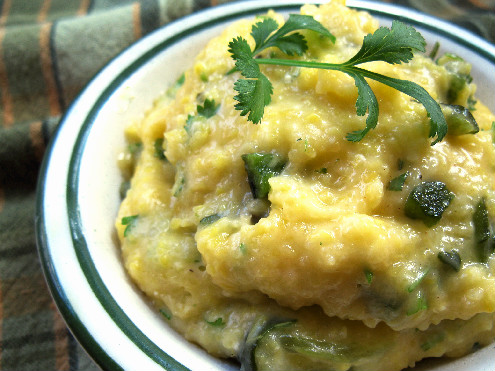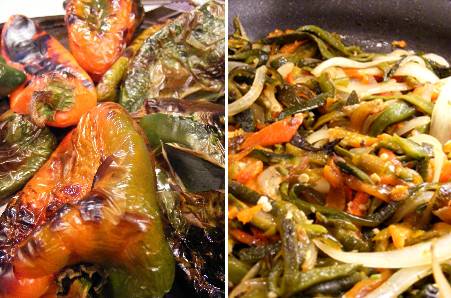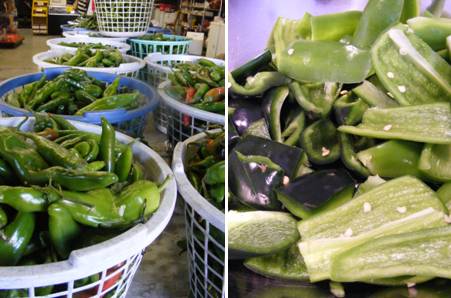Cornmeal: Shrimp and Bacon Grits
Thursday, June 3rd, 2010A few of you have said “grits” (the name) is off-putting.
True, it’s a little rough and abrupt. It doesn’t roll fluidly off the tongue. But, I like it. Just like I dig accents and colloquialisms – Southern included. When I lived in Texas, I couldn’t resist picking up a little twang and using “y’all” and “fixin’s” in my vernacular. It was signature to the South, just like grits.
To no surprise, shrimp and grits is also rooted there – South Carolina in particular. It was referred to as “breakfast shrimp” and was a simple fisherman’s breakfast during shrimping season–usually consisting only of shrimp, grits and salt.
Then along came Bill Neal, a young North Carolina chef whose interpretation of the dish has been described as “one of the signature dishes of the Southern culinary renaissance.”
Neal gussied up the low-country version adding sautéed mushrooms, bacon, garlic and cheese grits. It was a hit. Not really a surprise to me since it has bacon and cheese.
His version has become popularized with a little help from a New York Times review and his Southern cookbooks: Bill Neal’s Southern Cooking; Biscuits, Spoonbread, and Sweet Potato Pie; and Good Old Grits Cookbook. Neal died in 1991, but his shrimp and grits are still a favorite at his former restaurant Crook’s Corner in Chapel Hill, N.C. For any of you into Southern food, you may also want to check out Remembering Bill Neal: Favorite Recipes from a Life in Cooking, another collection of his recipes used at Crook’s, which was published in 2004.
The recipe below is adapted from Neal’s version. I reduced the amount of bacon, increased mushrooms, tweaked the seasonings and used green chile cheese grits for some extra earthiness and depth. It’s relatively easy to make and is fantastic for brunch served with some home-made biscuits. It’s good. So good, my husband puts it in his top 5 recipes on this site.
Also, I wanted to share this quirky, little black and white film about grits that I found while perusing the internet.
Tidbits on Grits:
- Southerners generally prefer stone-ground grits to the instant version. I found at least one reference to instant grits as “hog slop.”
- St. George, South Carolina hosts the World Grits Festival.
- At the 1996 Summer Olympics in Atlanta, Ga., Quaker (the grits producer) introduced the international audience to grits via its grits campaign.
Sources: Good Old Grits Cookbook by Bill Neal & David Perry; “Some South for Your Mouth,” Duke Magazine.









